Whether you're a royal family member, a celebrity or just an average Jane, weddings are positively soaked in tradition. Wearing white is chief among them, a practice that was popularised by Britain's Queen Victoria when she wore a white lace gown to marry Prince Albert in 1840.
Before that, however, brides could wear any shade for their wedding, with red dresses and gold and silver embroidery particularly popular among the wealthy and royals.
Wearing white is thought to symbolise a bride's virtue, but back then it served another purpose among the elite: with laundering practices far more rigorous and expensive, keeping white fabric pristine was a signal of wealth and a life of luxury.
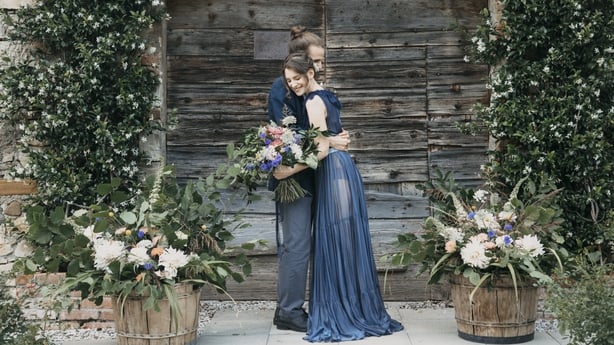
In 2024, however, with many couples waiting years to wed after potentially years of living together, some traditions – particularly that of the carnally "pure", white-wearing bride – simply doesn't hold water anymore.
Many factors have gone into making non-traditional wedding outfits popular, including sustainability, accessibility, how we express our genders, cost, and the recent pandemic that upturned almost all wedding norms and proved we never really needed them anyway.
When designer Mags Morgan went looking for her own colourful and distinctly "her" bridal outfit in 2015, she was fiercely disappointed with what was on offer.
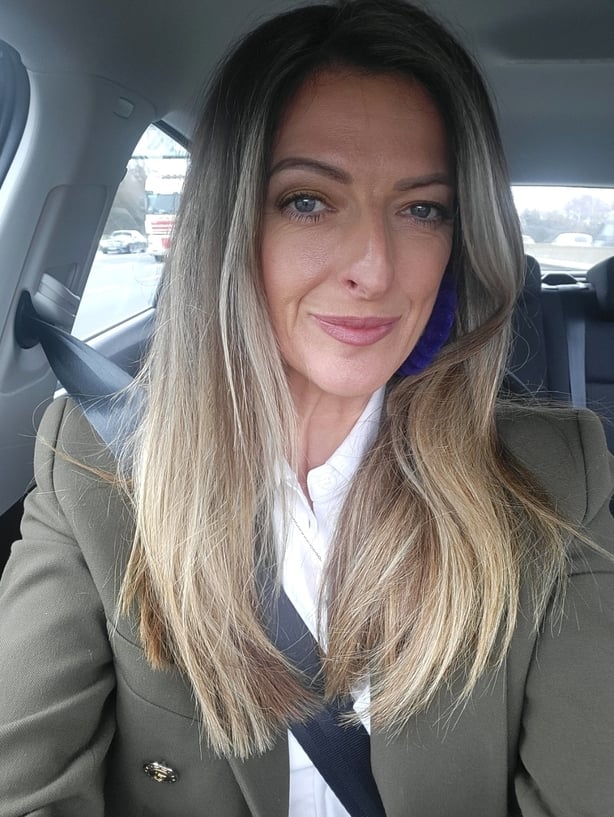
"I did the kind of the trial around as you do, and every dress just looks the same to me", she told RTÉ Lifestyle. Her eventual outfit – a green corset with a deep ivory skirt, lace gloves, and the same 49-year-old pillbox hat her mum wore on her wedding day – was created with the help of a designer in London.
Morgan is now the creative director do Mizz Rio, an alternative bridal boutique in Dublin that offers a range of white and colourful dresses, jumpsuits, and separates. She said there's a growing demand for wedding outfits that eschew traditional styles.
"Not everybody wants a dress. Not everybody wears a dress. I get brides coming to me going, I never wear a dress, I don't own a dress. And now I feel I have to wear one and I don't know what to do. And they can feel like there's something wrong with them, they're not excited about it.
"It petrifies them, dress shopping."
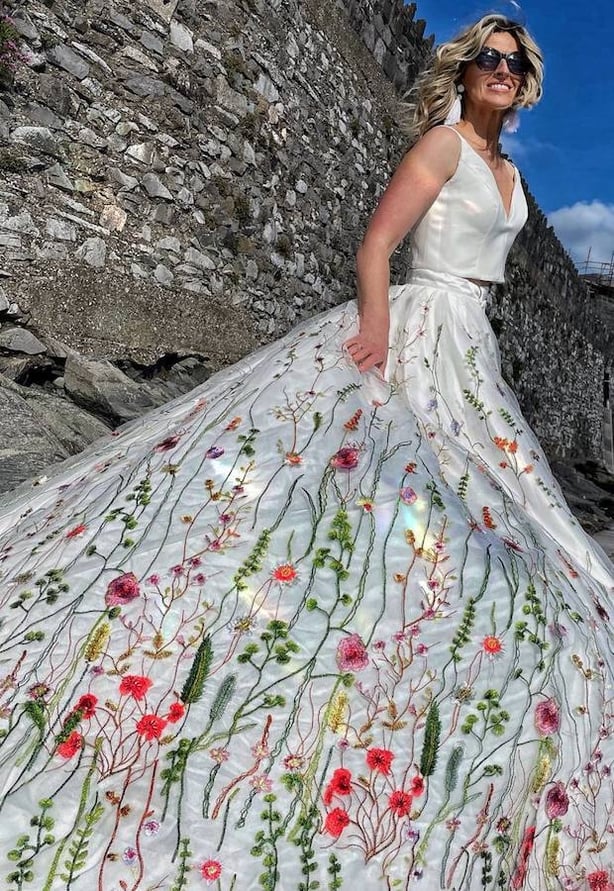
Louise Gilsenan didn't wear a dress for her first wedding, she told me: "I wore this cream suit. Horrible thing."
So when she unexpectedly got engaged in her 50s, after 15 years of being single, she "was adamant that I wanted a dress that would reflect my personality".
A cancer survivor twice over, Gilsenan lives with a "f**k life" attitude, from her shocking pink hair to her no-nonsense form of sincerity. "It's like cancer gave me life that I never knew I had till I was possibly not going to have it", she said.
Growing up, she imagined a traditional wedding dress: "Lacy and white, and not revealing. So this is very different."
Her first stop for wedding shopping was the Barnardos Bridal Rooms, which curates a collection of brand-new bridal outfits donated by Irish retailers and designers. Purchases from the boutique also go toward Barnardos' work supporting children in Ireland.
"I like that whole idea of sustainability and giving back to charity and community builds people", Gilsenan said.
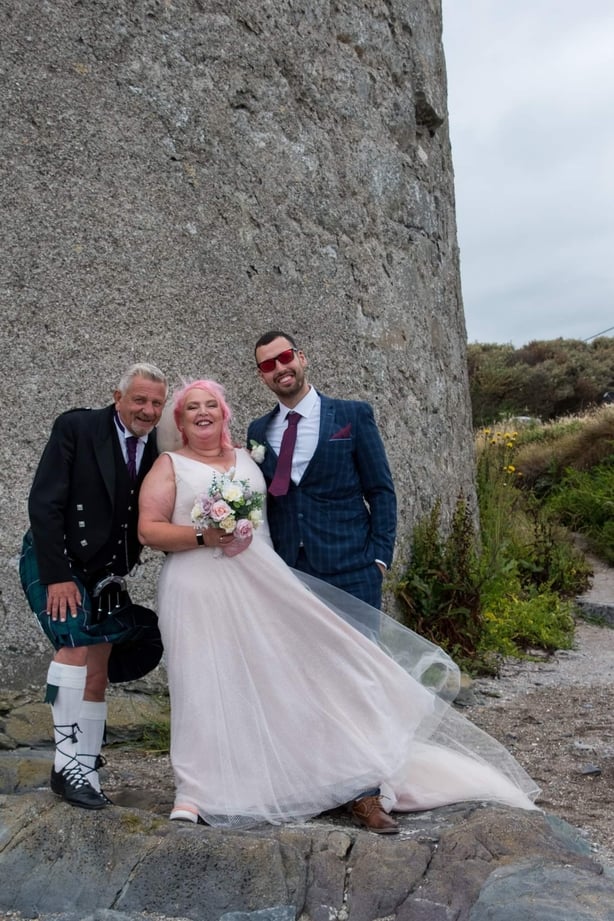
Her dream dress was hanging on the changing room door when she walked in: a shimmering blush pink gown with a V-neckline, a matching belt at the waist and a train that trailed behind her. "I literally felt like a princess on today."
Google trends shows searches for 'alternative wedding' spiked in September 2022, while searches for 'alternative wedding dresses' peaked in late October. If this is anything to go by, we may be in for some left of centre weddings this year.
It's not just Ireland, either: Pinterest's 2023 Wedding Report revealed a 490% increase in searches for 'anti-bride wedding'.
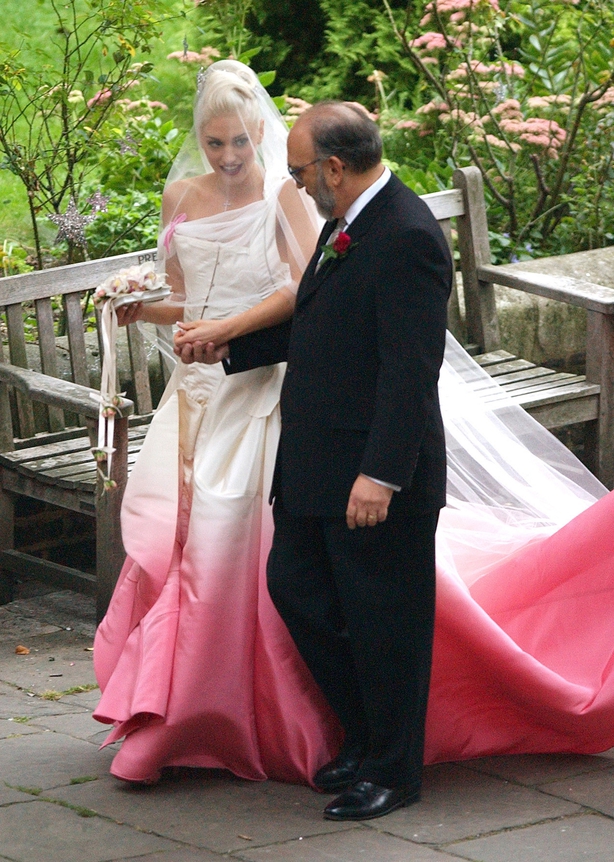
And it's not just a current trend. Scores of celebrities have exchanged wows in colourful and non-traditional outfits, including Dita von Teese, who wore an iridescent purple ballgown by Vivienne Westwood; Gwen Stefani in ombré pink; Emily Ratajkowski in her mustard yellow Zara suit; Sarah Jessica Parker in black and Elizabeth Taylor in canary yellow, way back in 1964.
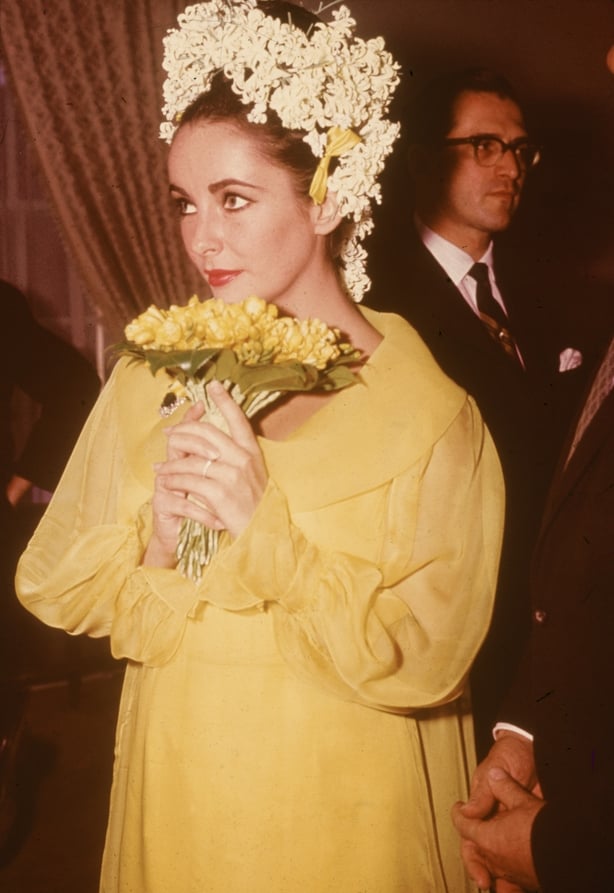
This begs the question, then: if it isn't white, what makes a dress "bridal"? While there are some features that scream wedding, such as lace and a ballgown silhouette, Morgan said it comes down to a "feeling". Translating that to a bride, and then to her friends and family, can be a challenge.
"What often happens when a bride wants a different colour or wants something alternative [is] those in her circle, they don't see it, they don't understand it. So the friends are like, well, you're not going to look like a bride. If you want a black dress, that's not going to look bright, or you want trousers, jeans, nobody will know you're the bride.
"It's just not around enough. There's not as much on Pinterest, there's not as much in media, so they don't see brides in colourful dresses, so they just don't have that experience."
As for Gilsenan, she has already promised her dress to her daughter for her own wedding.


